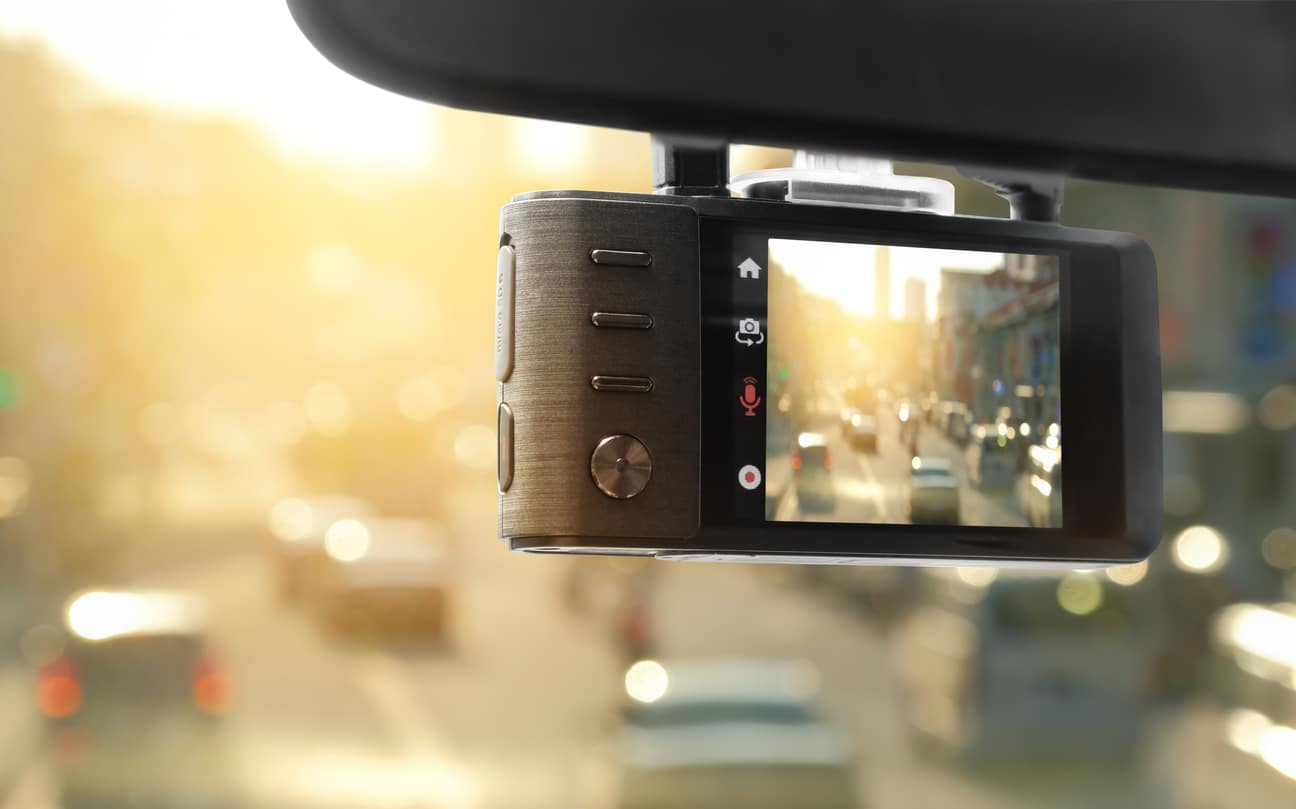
Dash cams serve as a neutral means to establish fault in an accident and detail the events as they unfolded. The success of a vehicle accident injury claim might rely on dash cam evidence to determine liability and the obligation of the at-fault party’s insurer to cover damages.
California’s regulations permit the use of dash cam recordings in vehicle accident claims. Discover how to correctly install a dash cam in your vehicle in compliance with California laws and the potential impact of the footage on your claim.
Key Points:
Since 2011, following new legislation, Californian drivers have been allowed to install dash cams and capture footage, under specific conditions outlined in California Vehicle Code § 26708. These conditions govern the dash cam’s placement, recording duration, and audio capture within the vehicle.
Your dash cam should be positioned in a manner that does not obstruct your view of the road. Acceptable locations for dash cam installation include:
The dash cam may record based on unusual vehicle motion or manual activation. California law mandates that only 30 seconds of footage immediately before and after a crash can be recorded by the device. Recording beyond these time frames is not permitted.
In California, a “two-party consent” state, recording conversations requires the consent of all parties involved. If your dash cam is capable of audio recording, you must visibly inform your passengers of potential recording and obtain their consent. The audio recording feature should be disabled if any passenger does not consent.
In cases where evidence might be at risk of destruction, police are authorized to seize dash cam footage under urgent circumstances. This may occur if, for example, there’s suspicion of reckless driving leading to an accident and a concern that the footage may be deleted.
However, police require a valid reason for seizing dash cam footage. In minor incidents where information is exchanged without further complications, law enforcement does not have the authority to confiscate the dash cam without cause.
While there is no specific law regarding dash cam usage in accident claims in California, the footage can be crucial in proving negligence and fault in an accident.
Dash cam recordings can provide key evidence, such as:
For example, dash cam footage can refute claims of sober driving by showing erratic behavior indicative of impairment. This can lead insurers to deem their policyholder at fault, potentially leading to compensation within the policy limits.
If faced with police misconduct, individuals have the right to request dash cam footage from law enforcement, adhering to the procedures outlined in the dash cam california law from 2018, including requests under the Public Records Act and to the California Highway Patrol labeled as “Request for AB 748 Information”.
In some instances, footage obtained in violation of California’s dash cam regulations, such as without the knowledge or consent of recorded parties, may be inadmissible in insurance or court proceedings. It’s crucial to consult with Avian Law Group to navigate the legalities of including dash cam footage in your claim evidence.
All parties in a car accident claim may utilize dash cam footage, necessitating legal action to compel evidence sharing during discovery. Similarly, parties can request dash cam footage from each other, with refusal to comply potentially resulting in sanctions.
California laws grant employees using company vehicles the right to access dash cam footage, which must be provided by employers within five days of request, free of charge.
Dash cam evidence can significantly strengthen your car accident claim, providing clear insights into the incident’s circumstances and contributing factors. Leveraging this footage can expedite the settlement process and lead to a more favorable resolution of your claim.